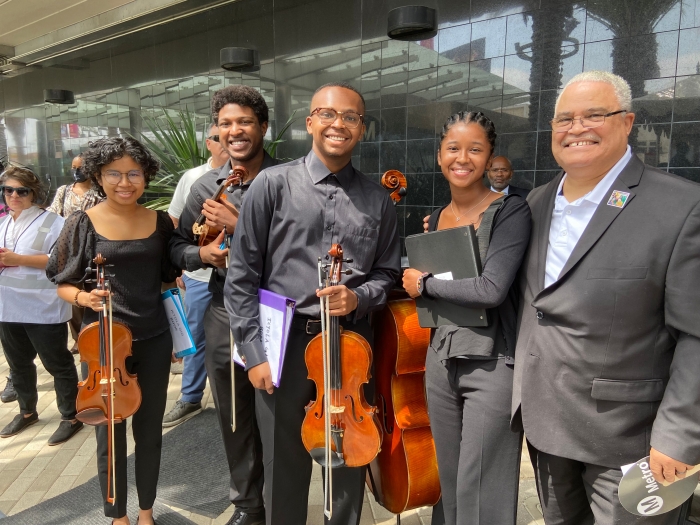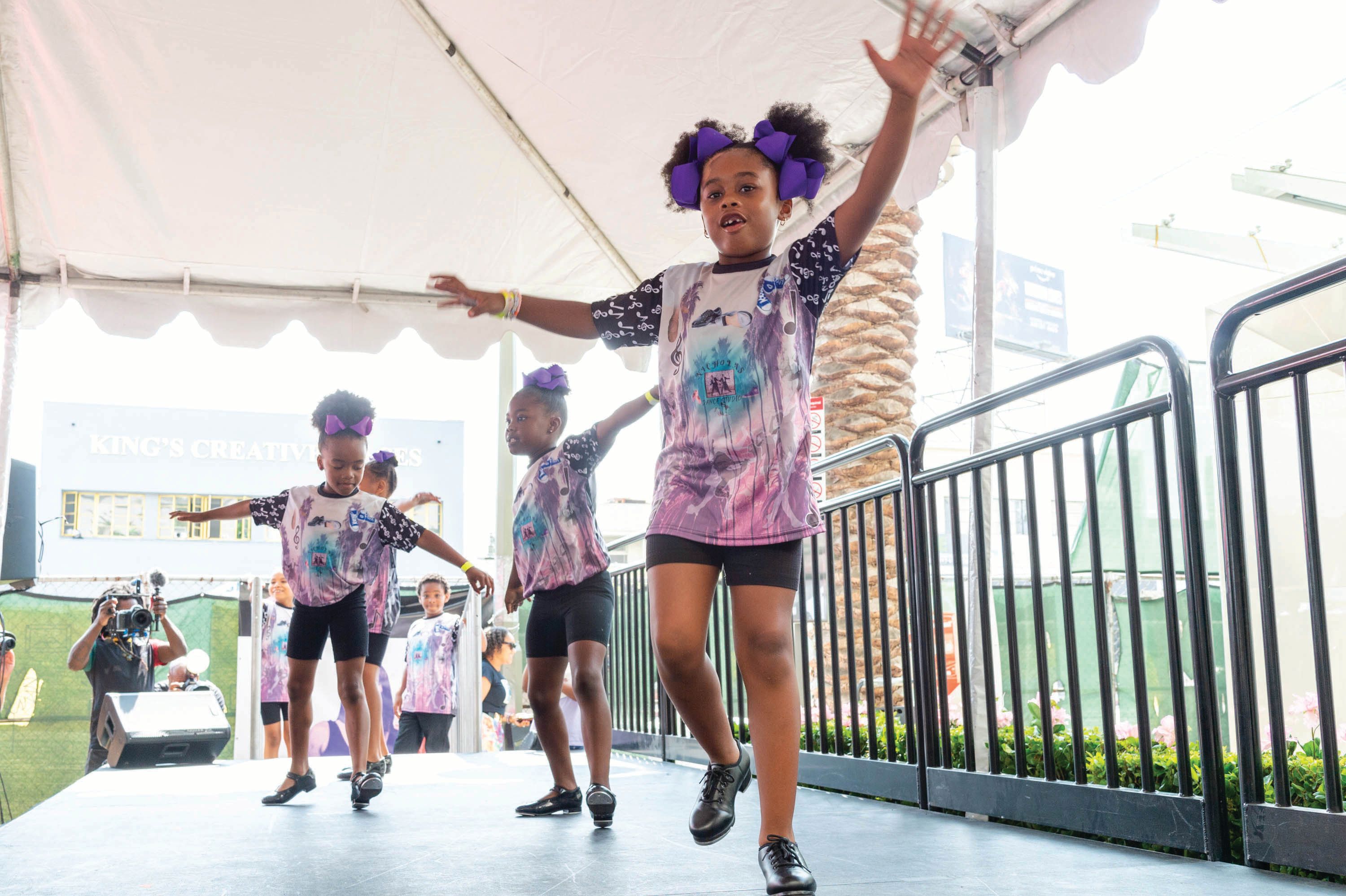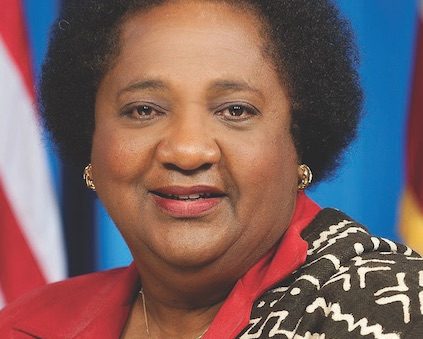
More than 100 community members came out to witness the dedication of the Martin Luther King K Line Station located at the Baldwin Hills-Crenshaw Plaza Mall in South Los Angeles.
The Los Angeles County Metropolitan Transportation Authority (Metro) held the ceremony on July 23 with L.A. Mayor and Metro Board Member Eric Garcetti, Metro First Chair Jacquelyn Dupont-Walker and Crenshaw community leaders, supporters and residents on hand to celebrate the memory of civil rights activist Martin Luther King.
The program included a tap dance presentation by Nicholas Dance Studio students and a classical performance by the Inner City Youth Orchestra of L.A. Also, Bishop Sylvester Washington of Pleasant Hill Baptist Church, Cathie Nicholas, Brian Bowers, Charles Dickerson III, Cori Chapman and Assemblymember Isaac Bryan gave remarks.

The MLK Station is a key stop on the soon-to-open K Line, that will create a new transit nexus in the Crenshaw District for residents and others looking for equitable access to jobs and opportunity.
“The Martin L. King Jr. station represents a new opportunity to provide much-needed transit to the Crenshaw community,” said Glendale City Council Member and Metro Board Chair Ara Najarian. “The station is appropriately named after Dr. King, who fought hard to improve access to opportunity during the civil rights era, as it will help connect local Crenshaw residents to jobs, housing and community resources when the K Line opens later this year.”
The MLK Station is one of the most important stations on the K Line, providing access to major commercial centers, employment, housing developments and institutional centers. The MLK Station itself is in the most heavily developed area of the entire K Line and will serve the nearby Kaiser Permanente medical facility at Marlton Square. Also, the Baldwin Hills Crenshaw Plaza is adjacent to the station and is considered a major economic and cultural hub of the local African American community.

“It’s ironic that the Baldwin Hills Crenshaw Plaza was originally built as a shopping center to accommodate the automobile,” said Dupont-Walker.
“With this new rail station, we are essentially reinventing how our community accesses this major shopping destination. With new development plans now being entertained for this area, you can rest assured that, whatever the future holds, Metro’s MLK Station will provide our community the rail service it needs to get there.”
MLK Station, like other planned stations along the K Line, are properly placed for the new north-south rail service to link a large number of transit-dependent residents to both residential and commercial areas along the Crenshaw Corridor. Community members will be able to access K Line stations to more easily travel throughout the corridor to access jobs, colleges, universities and shopping areas, among others.

“After decades of planning and advocating, we are finally ready for an overdue celebration dedicating the Martin Luther King Jr. Station as part of the K Line. This station represents a vital connection of a cornerstone destination, the Baldwin Hills Crenshaw Mall, to the entire Metro rail system,” said L.A. County Supervisor and Metro Board Member Holly J. Mitchell.
“Generations of Crenshaw residents and visitors hoped for a more convenient, reliable method of accessing South LA cultural and economic hotspots, so I am proud to say that dream has been realized.”
Additionally, the MLK Station will provide an essential transit link for commuters heading to key destinations in downtown Los Angeles, the Westside and Sofi. The line will eventually connect to Los Angeles International Airport in 2024.
The K Line, also known as the Crenshaw/LAX Transit Project, will connect the existing Metro E Line (Expo) at Crenshaw and Exposition Boulevards to the C Line (Green) in El Segundo, providing a key transit alternative to driving the increasingly congested I-10, I-405 and I-105 freeways.
Overall, the K Line project represents a $2 billion public transportation investment that will provide easier north-south access to Crenshaw District residents and visitors. The project also offers motorists an option to get out of their vehicles to help improve air quality in communities suffering from hazardous air quality.
“This station will be a key entryway to a world-class transit system that will transform and improve the lives of Angelenos,” said Garcetti.
“We are excited to be dedicating yet another station in the heart of the Crenshaw District that will bring a new generation of riders to this neighborhood.”
Metro’s station dedication ceremony also highlighted the importance of the station, its art and nearby historic neighborhoods. Public officials recognized and featured early project champions, small businesses, local performing artists and Martin L. King Jr. station commemorative pin contest winner, high school student Cori Chapman.
“Community input was critical to Metro’s success on this project,” said Metro CEO Stephanie N. Wiggins.
“The K Line was designed to connect people to opportunity, and because of the community’s active participation in the design and construction process, Metro is delivering a rail line that will be well used, well-loved and will help the community thrive. Thank you to all the residents and businesses along the Crenshaw corridor that helped us build a rail line we can all be proud of!”
All K Line stations include artwork commissioned through the agency’s Metro Art program. Artists were selected through an open, competitive selection process following the recommendation of a panel of community-based arts professionals. Artworks commissioned for the Martin L. King, Jr. station include porcelain enamel panels by Eileen Cowin, a glass pavilion by Mara Lonner and a mosaic mural by Shinique Smith.
For additional information about the project, please visit https://kline.metro.net
For more information about Metro Art, please visit metro.net/art.







